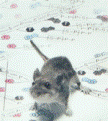Papers in the Biological Sciences

Jay F. Storz Publications
Document Type
Article
Date of this Version
2011
Citation
Chapter 22 in Virginie Orgogozo and Matthew V. Rockman (eds.), Molecular Methods for Evolutionary Genetics, Methods in Molecular Biology, vol. 772, pp. 377–396; DOI 10.1007/978-1-61779-228-1_22
Abstract
Identifying mechanisms of molecular adaptation can provide important insights into the process of phenotypic evolution, but it can be exceedingly difficult to quantify the phenotypic effects of specific mutational changes. To verify the adaptive significance of genetically based changes in protein function, it is necessary to document functional differences between the products of derived and wild-type alleles and to demonstrate that such differences impinge on higher-level physiological processes (and ultimately, fitness). In the case of metabolic enzymes, this requires documenting in vivo differences in reaction rate that give rise to differences in flux through the pathway in which the enzymes function. These measured differences in pathway flux should then give rise to differences in cellular or systemic physiology that affect fitness-related variation in whole-organism performance. Efforts to establish these causal connections between genotype, phenotype, and fitness require experiments that carefully control for environmental variation and background genetic variation. Here, we discuss experimental approaches to evaluate the contributions of amino-acid mutations to adaptive phenotypic change. We discuss conceptual and methodological issues associated with in vitro and in vivo studies of protein function, and the evolutionary insights that can be gleaned from such studies. We also discuss the importance of isolating the effects of individual mutations to distinguish between positively selected substitutions that directly contribute to improvements in protein function versus positively selected, compensatory substitutions that mitigate negative pleiotropic effects of antecedent changes.


Comments
Copyright © 2011 Springer Science+Business Media, LLC. Used by permission.